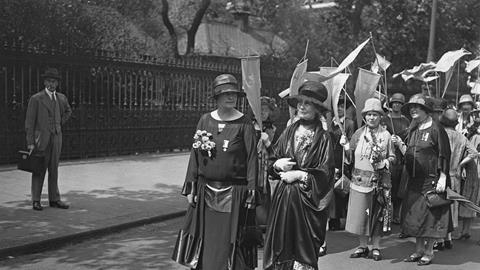As 1918 drew to a close, a new era opened for women in Britain. Not only had the Great War ended, but (some) women could now vote and stand for parliament. Feminists confidently hoped that the presence of women in parliament, together with the need for male MPs to take account of the female vote, would make it impossible for women’s issues to be ignored. With the enactment of the Sex Disqualification (Removal) Act 1919, women could become barristers, solicitors and magistrates, and they could sit on juries. Now, surely, the many legal disabilities and discriminations women suffered, and to which feminists had repeatedly drawn attention, would be tackled and removed.

Certainly, the 1920s looked promising. When we put together Women’s Legal Landmarks: Celebrating the History of Women and Law in the UK and Ireland (2019), we had 15 landmarks from 1918 to 1929, but none from the 1930s. Had we missed significant landmarks, or had progress really stalled? If so, why? This inspired us to edit a follow-up volume Women’s Legal Landmarks in the Interwar Years, for which our authors managed to identify 24 new landmarks from 1918 to 1929, and nine from the 1930s.
For a long time, the interwar years were dismissed as a period of feminism in abeyance. It was said that the young women who were beneficiaries of first-wave feminism just wanted to have fun (‘the roaring twenties’ was a common characterisation of the period). Slightly older women, who had lived through the war, wished to return to the ‘normality’ of domestic life. With the grant of the vote, women were viewed as ‘equal’ now, with no more need for ‘rights’.
Feminists were seen as an older and irrelevant generation, often as embittered spinsters in an era when finding your man was women’s primary but, for many, inaccessible goal. The formerly unified women’s movement split into different strands and this, together with the plethora of single-interest groups that sprang up, diluted the feminist impact. Other issues – economic depression and the peace movement – took women’s energies.
There is truth in all these explanations, but it does not mean that feminist activism ceased. Once we started to look more closely, it became clear that blame for the slowing down of progress should not be ascribed to the women themselves, but to the men. Most men also wanted a return to normality, and the normality they sought was the male domination of employment and public life, with women back in their ‘proper place’ of the home. And once they realised that the female vote did not radically change their electoral fortunes, the political parties, and most of the male MPs on whom the new women voters relied, became increasingly resistant to feminist claims.
Though they conscientiously listened to ‘the woman’s point of view’ as advanced by representatives of women’s organisations as well as their own female party members, they rarely gave them what they asked for. Equal pay for women was repeatedly denied, while the Labour party refused to adopt birth control as party policy for fear of alienating Catholic voters. The need for returning servicemen to get jobs after the war, men’s unemployment in the depression, the Irish war of independence and the threat of war in Europe, all presented more important priorities than measures to benefit women, whatever their status.
So we gave this volume a subtitle, Not for Want of Trying, to show how the problem was not a decline in feminist activism but a male-led backlash against the advances won by women. We included some landmarks that did not come to full fruition in the interwar period but were won later, such as Lady Rhondda’s petition to admit hereditary women peers to the House of Lords (not achieved until 1963). Even those that might be considered ‘unsuccessful’ – such as the failed implementation of the Report of the War Cabinet Committee on Women in Industry (1919) or Short v Poole Corporation [1926], which challenged the marriage bar and was lost on appeal – were (and in some cases continued to be) vital steps in securing later law reform.
Why had we not known about these landmarks and ‘steps along the way’? Because legal history has traditionally been written with men’s interests in mind. Women’s issues are largely ignored or, if mentioned, presented as if they would have happened irrespective of feminist activism – equal franchise, for example, though it took a very long time to arrive – or thanks to a reformed and benevolent legislature or judiciary. Or for different reasons: the Matrimonial Causes Act 1923, for instance, was said to be enacted to tidy up inconsistencies in the application of the 1857 divorce law, and the Administration of Estates Act 1925, with its gender-neutral provisions on intestacy, is typically portrayed as part of a general plan to streamline land law.
Certainly, where legal reform is concerned, there is often a mixture of different motivations. Lawmakers do not like gaps between the letter and the practice of the law, but, then again, much legislation is allowed to linger on in disorder where there is no general appetite for change. And yet, as feminists know from experience, suggestions of inevitability or alternative explanations are all too easy, and certainly too convenient a method, for ensuring the patriarchal control of knowledge, while the representation of legal landmarks as part of a steady advancing progress for women is a familiar trope deployed to ensure the erasure of decades of feminist endeavour.
Rosemary Auchmuty is professor of law emerita at the School of Law, University of Reading. She is co-editor of Women’s Legal Landmarks in the Interwar Years (Bloomsbury)
Lady Rhondda: 1926 equal rights demonstration






























1 Reader's comment